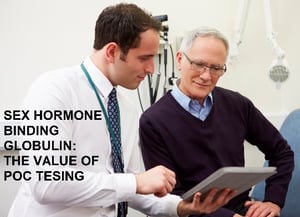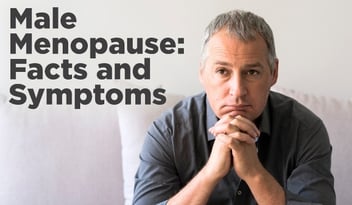The value of point-of-care testing is clear. The immediacy of the results allows for a more patient-centered approach to healthcare delivery, whether it be for more simple diagnoses such as strep throat or for less frequent diagnoses such as abnormal SHBG levels.
SHBG, or sex hormone-binding globulin, is a protein produced mainly in the liver. It binds certain hormones, including testosterone, dihydrotestosterone (DHT), and estradiol (an estrogen), and carries these hormones throughout your bloodstream. Hormones in this bound state aren’t available for your cells to use—this is how your body regulates hormone levels. Simply put, when your SHBG levels are low, your body has more hormones available for use. When your SHBG levels are high, your body has fewer hormones at its disposal.
So Do We Go Low, or Do We Go High?
Low, high, what does it all mean? Because low SHBG levels free up more hormones for your body to use, the result is side effects such as fluid retention, acne, low sperm count, increased appetite and weight gain, increased muscle mass, and mood swings in men; and weight gain, excess facial and body hair, acne, mood changes, and menstrual changes in women.
In men, about 45% to 65% of testosterone in blood is normally bound to SHBG, with the remainder either unbound (free testosterone) or weakly and reversibly bound to albumin, which is the main protein in the blood. In women, a slightly higher amount of testosterone, 66% to 78%, is bound to SHBG in the blood. A total testosterone test does not distinguish between bound and unbound testosterone, so if a person's SHBG level is not normal, the total testosterone may not accurately reflect the amount of testosterone that is available to the person's tissues. Physicians can better interpret their patients’ testosterone profile with a comprehensive understanding of the differences between total, free, and bio-available testosterone. This becomes particularly important when testosterone concentrations are not consistent with clinical symptoms.
Risk factors for low SHBG levels include obesity, insulin resistance or type 2 diabetes, hypothyroidism, Cushing syndrome, nonalcoholic fatty liver disease, acromegaly, and androgen steroid use. In men, levels of SHBG are low during puberty, stabilize in adulthood, and rise during the elderly years at the same time that total testosterone levels begin to decrease. In postmenopausal women, SHBG, testosterone, and estrogen concentrations decrease as hormone production by the ovaries decreases.
When To Test
SHBG tests are not typically part of a routine check-up, so when does a doctor usually order this test? If you have symptoms of abnormal SHBG levels, such as the ones we discussed above; hypogonadism; or androgen deficiency; if a total testosterone test results don’t provide a complete picture; or if your testosterone or estrogen levels are excessively low or high, your physician will likely perform an SHBG test. For men, an SHBG test could be one of numerous tests performed to help determine the cause of infertility, a low sex drive, or erectile dysfunction. For women, it could be part of a panel of tests to determine the cause of irregular or missed menstrual periods, infertility, acne, and excess facial and body hair.
If a patient is diagnosed with low levels of SHBG, there are several recommendations that a physician may present. These include regular exercise, oral contraceptives (for women), diet changes, weight loss, and herbal and dietary supplements. Prescription medication and other clinical therapies may also be needed.
Testing Options
Testing levels of SHBG requires only a blood draw. The sample can, of course, be sent out to a laboratory. However, point-of-care testing both empowers the physician and is more beneficial for the patient, allowing healthcare providers to diagnose a condition or monitor a patient and adjust therapy as necessary.
What Patients Don’t Know Can Hurt Them
Most patients have likely never heard of SHBG, nor do they have an understanding of its impact on their health. SHBG is an important regulator of testosterone and estrogen levels, responsible for distributing sex hormones throughout the body, and yet many doctors do not test for it. While it remains understudied, the National Center for Biotechnology Information stated in 2016 that recent findings support SHBG playing an important role in health and disease and could be a useful assessment marker. For physicians that want the ability to diagnose and monitor patient therapy, the SHBG assay, when used in conjunction the FastPack Total Testosterone Assay, will provide a more complete portrayal of their patients' androgen status.



Share Article